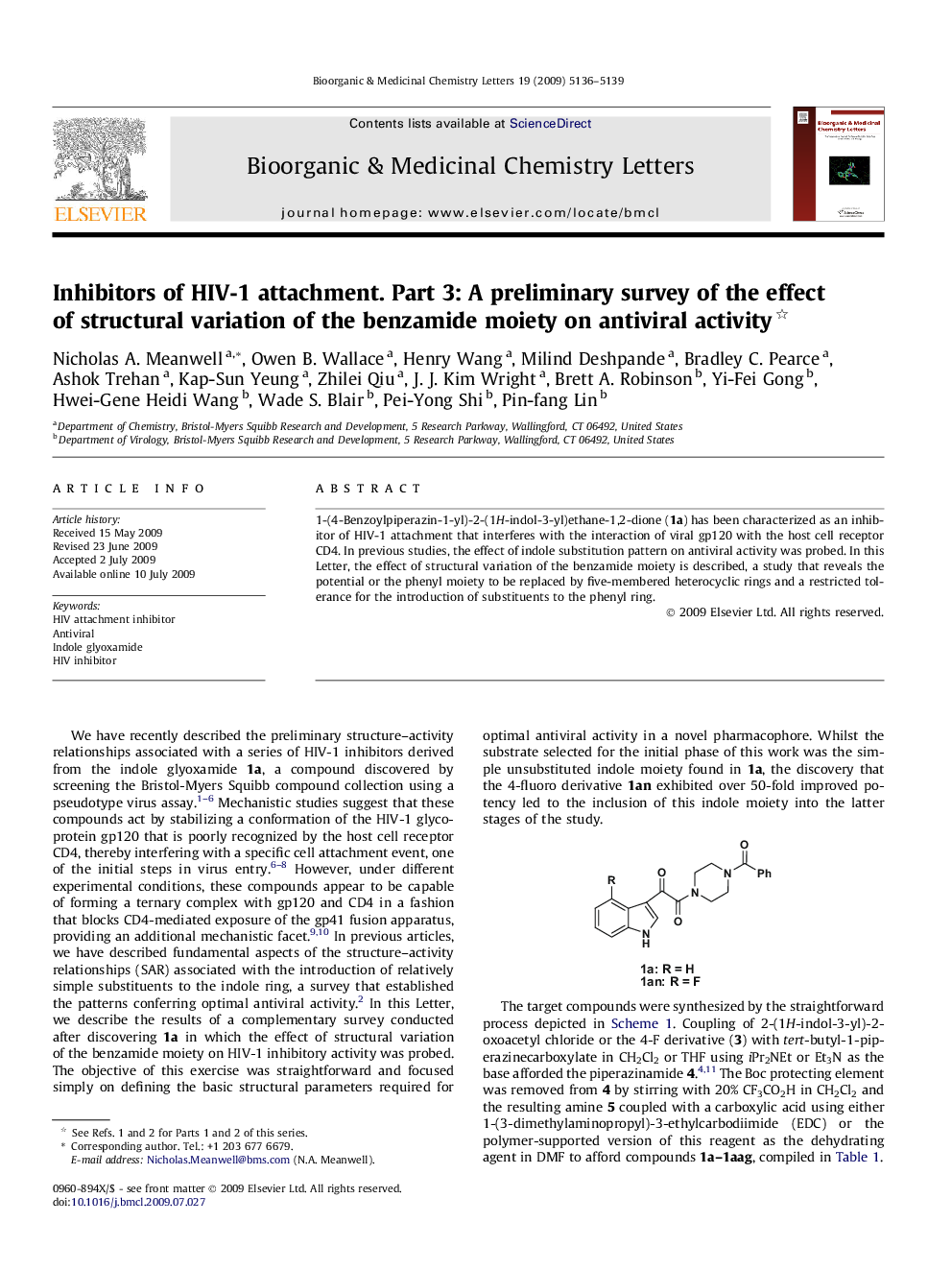| Article ID | Journal | Published Year | Pages | File Type |
|---|---|---|---|---|
| 1363721 | Bioorganic & Medicinal Chemistry Letters | 2009 | 4 Pages |
1-(4-Benzoylpiperazin-1-yl)-2-(1H-indol-3-yl)ethane-1,2-dione (1a) has been characterized as an inhibitor of HIV-1 attachment that interferes with the interaction of viral gp120 with the host cell receptor CD4. In previous studies, the effect of indole substitution pattern on antiviral activity was probed. In this Letter, the effect of structural variation of the benzamide moiety is described, a study that reveals the potential or the phenyl moiety to be replaced by five-membered heterocyclic rings and a restricted tolerance for the introduction of substituents to the phenyl ring.
Graphical abstract1-(4-Benzoylpiperazin-1-yl)-2-(1H-indol-3-yl)ethane-1,2-dione (1a) has been characterized as an inhibitor of HIV-1 attachment that interferes with the interaction of viral gp120 with the host cell receptor CD4. In previous studies, the effect of indole substitution pattern on antiviral activity was probed. In this Letter, the effect of structural variation of the benzamide moiety is described, a study that reveals the potential or the phenyl moiety to be replaced by five-membered heterocyclic rings and a restricted tolerance for the introduction of substituents to the phenyl ring.Figure optionsDownload full-size imageDownload as PowerPoint slide
